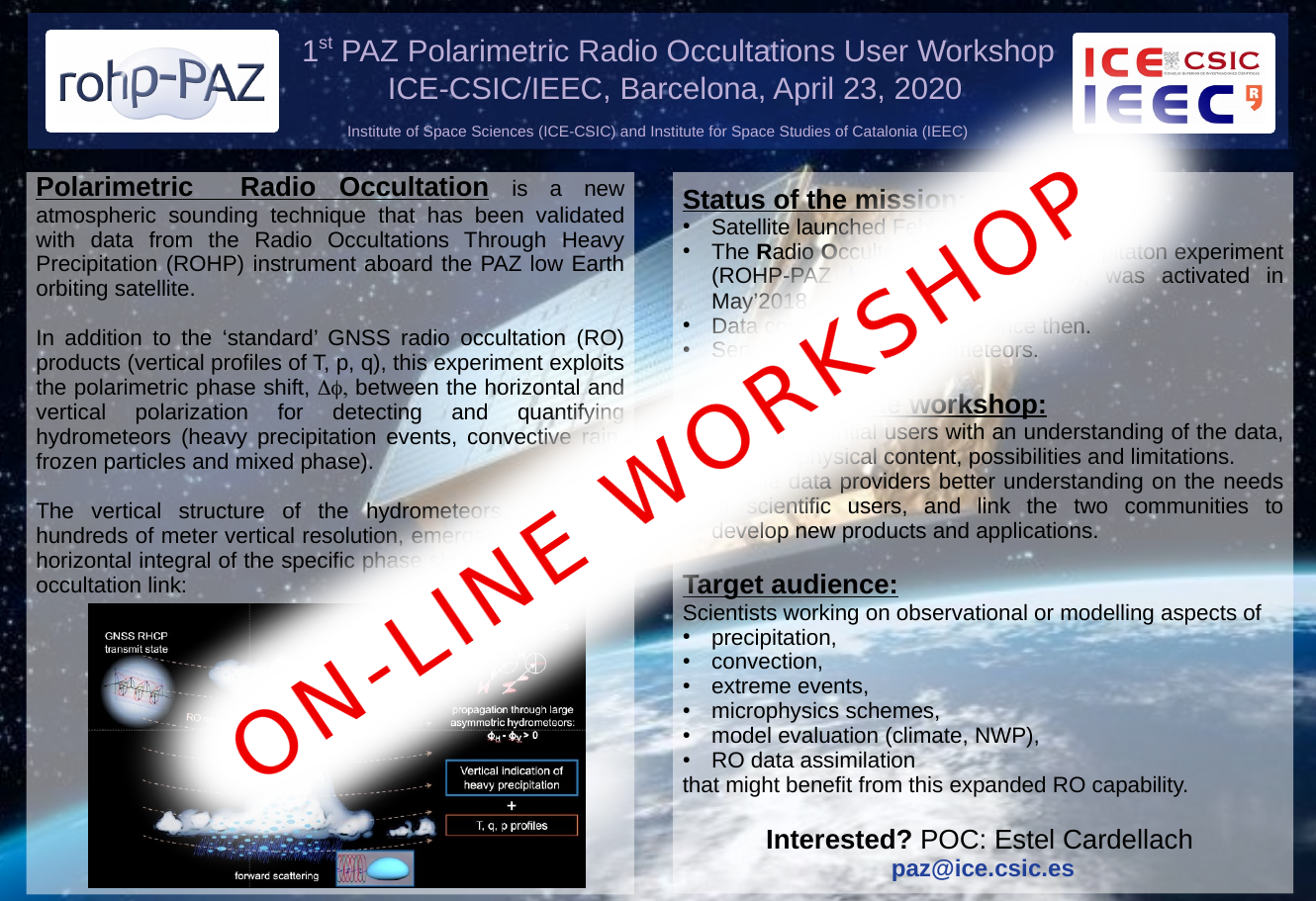1st PAZ Polarimetric Radio Occultations User Workshop

In addition to the 'standard' GNSS radio occultation (RO) products (vertical profiles of T, p, q), this experiment exploits the polarimetric phase shift between the horizontal and vertical polarization for detecting and quantifying hydrometeors (heavy precipitation events, convective rain, frozen particles and mixed phase). The vertical structure of the hydrometeors, at a few hundreds of meter vertical resolution, emerges as the near-horizontal integral of the specific phase shift along the radio occultation link.
The PAZ mission was launched in February 2018 and the ROHP experiment was activated in May 2018. Since then, the data have been continuously acquired and the sensitivity of the polarimetric observables to the presence of hydrometeors has been proven.
The workshop targets scientists working on observational or modelling aspects of precipitation, convection, extreme events, microphysics schemes, model evaluation (climate, NWP), and RO data assimilation that might benefit from this expanded RO capability.
Objectives of the workshop are:
- to provide potential users with an understanding of the data, their geophysical content, possibilities and limitations;
- to enable data providers better understanding on the needs of scientific users; and
- to link the two communities to develop new products and applications.
